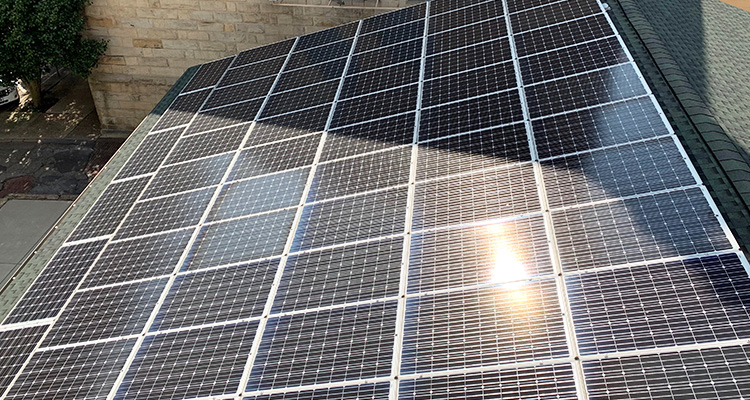Editor’s note: If going solar sounds intriguing, but you are worried it’s too pricey, too “panelly,” or just, well, too much, today’s Greening Up post shares the stories of two area residents who are living and loving the semi-solar life.
 When Randy Whitehead wanted to lighten up a kitchen located in the dark middle of his Woodsdale home, there were plenty of options. Fluorescents, LEDs, something retro, making a hole in the roof.
When Randy Whitehead wanted to lighten up a kitchen located in the dark middle of his Woodsdale home, there were plenty of options. Fluorescents, LEDs, something retro, making a hole in the roof.
He opted for the hole. Twice.
Solar tubes now connect ambient light from the sky to the indoors, aiming it squarely at ceilings in Whitehead’s kitchen and a bathroom. Inside the rooms, circular fixtures look pretty much like any other ceiling-flush light. But, there are no wires, no bulbs — just pure sunshine.
“It’s different all the time,” he said of the quality of the light, which was fluorescent-intense on the day of his interview with Weelunk. “On a cloudy day, you have a nice glow coming in. Even at night, if there’s a moon, you have enough light — it’s like a night light.”
He is happy with the natural light as it is, but said some tubes come equipped with dimmers to tone things down on sunny days or an electric-bulb backup so that the fixture can also produce light at night.
“It’s solar,” he said of why he’d rather stick with managing the tube light along with passive solar coming in from windows in an adjacent room. “There’s no electricity cost. It’s on all the time.”
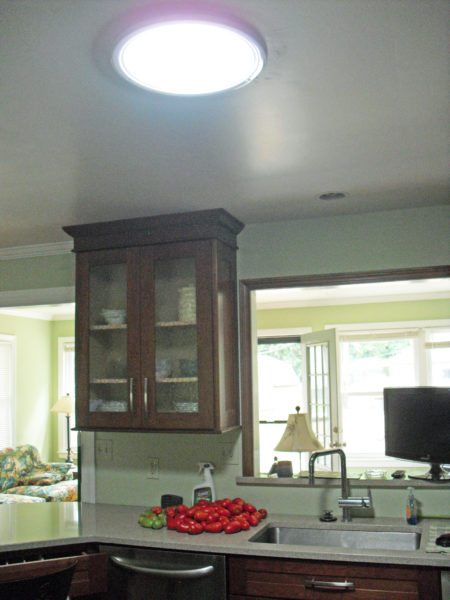
Whitehead, who was wary of the higher cost that solar panels or even more traditional skylights can bring, said the solar tubes turned out to be the perfect energy-lowering solution.
This was especially true as he is handy. He described the installation difficulty as three “hammers” on a scale of one to five. “You have to be able to cut a hole in your roof and do flashing.”
It also worked because, unlike many homes in the Woodsdale/Edgwood historic district, his house is 1980s construction. The attic has standard 14-inch gaps between joists, which solar tubes and their fixtures are designed to fit. He chose a 10-inch diameter tube for the bath and a 14-inch one for the kitchen.
Ceiling-to-roof distance was also working in his favor. His attic, which he insulated thoroughly to further enhance his energy savings, is only about four or five feet in height.
“These would not lend themselves to the common two-story Victorian homes (with full attics) that we have in this neighborhood,” Whitehead noted.
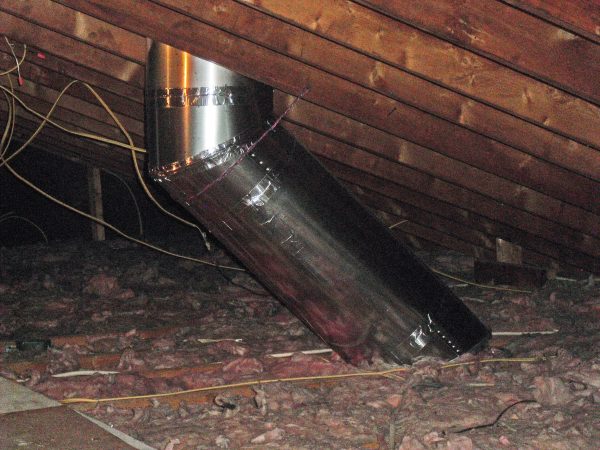
WORKING GREEN
Mary Ellen Cassidy can relate.
When the former science teacher/professor and her husband, Patrick, were looking into solar a few years ago, the installation company itself recommended against trying it at home.
The attic wasn’t the problem. It turned out their Woodsdale house wasn’t a great site.
“The incline wasn’t right. The trees weren’t right,” Cassidy said. Ground-based panels could have been an alternative, the company told them, but limited yard space and a location near a main road made that seem like a poor choice, as well.
But Patrick Cassidy’s law office in the 1859-built First State Capitol Building in downtown, was a different story. There, a complicated roofline was also problematic, but an adjacent garage was pretty much perfect.
Now, nestled midst the historic office space, the City-County Building and St. Matthew’s Episcopal Church, a roof full of solar panels faces the south. They catch enough sun to produce 20 to 30 percent of the building’s energy needs.
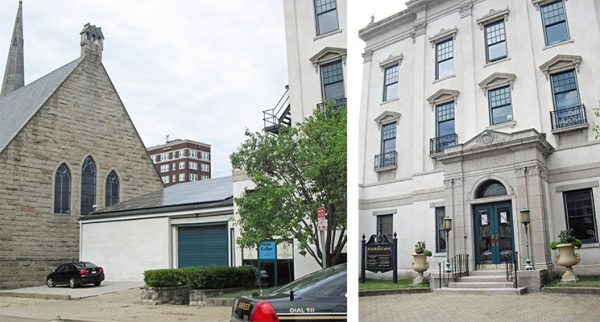
Given the size of the building, which also houses such entities as the Wheeling branch of West Virginia Public Broadcasting, the savings have added up fairly quickly. The couple are close to recouping their installation costs after five years. They figure they will be saving money in two more years.
The timing of their installation had a lot to do with why the return on their investment has been relatively speedy, Cassidy noted. They first looked at solar about 10 years ago. At that time, the cost was too high to be recouped in a reasonable amount of time.
But, by 2014, costs had dropped. That lowered cost was further reduced by a federal tax credit and an assist from the USDA’s REAP program (the latter because the installation would be on a commercial building), Cassidy said.
They also saved money by installing their system in cooperation with a handful of other county residents who went solar at the same time. The individuals, who connected through the non-profit Solar United Neighbors, qualified for a group discount.
The icing on the timing cake was that their 45th anniversary was approaching.
“Let’s give each other solar panels,” they decided, breaking a tradition of low-key celebration that was more likely to be something simple, like a dinner out.
Cassidy laughed about this. “People would ask what we’d done for our anniversary and, when they heard, they’d be like, ‘uh-huh?’”
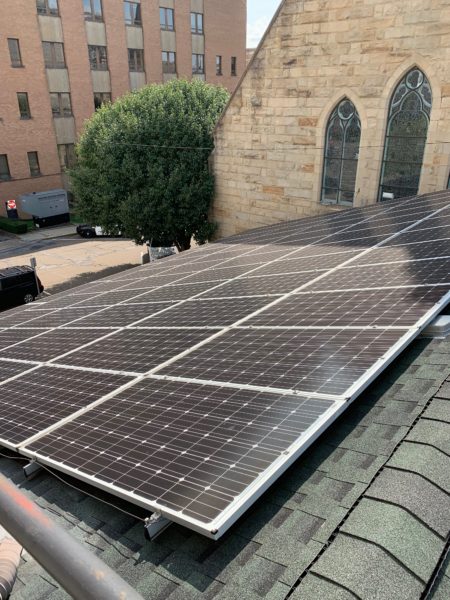
BEYOND THE BOTTOM LINE
There have been a few surprises along the way. One particularly sunny month, the panels produced enough energy that the couple actually sold a bit back onto the energy grid instead of paying a bill. “We still don’t know how that happened,” Cassidy joked.
But, the biggest surprise has been an emotional one.
“It did something to me that I didn’t expect,” Cassidy said. “I was thinking: How much money is it going to save, how much CO2 will be avoided? But, when I saw them (panels) up there, I was overwhelmed.”
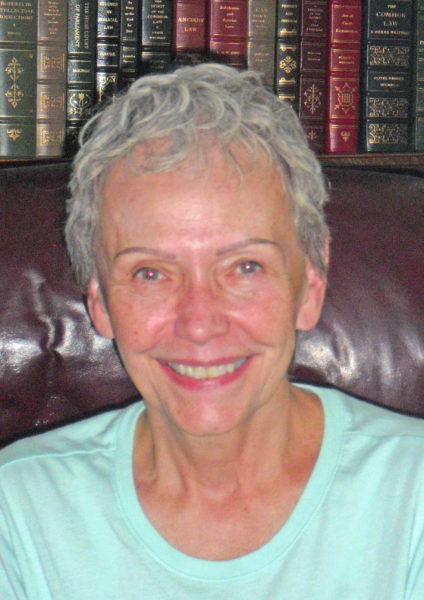
She gets the same feeling when she visits with her grandchildren, whom she doesn’t want to experience environmental disaster as they mature.
“It just makes you so hopeful,” she said of dragging their personal feet against climate change. “Maybe we won’t be too late in figuring this out.”
Cassidy is so convinced that full or partial solar is worth doing, she has become a bit of a lobbyist. When the West Virginia Legislature pondered an effort that would have inhibited solar installations by preventing small energy producers from selling excess power back onto the grid, she was among those who took action. The effort failed, and she was encouraged.
She is also in favor of any effort that helps lower-income homeowners, subsidized housing developments and non-profits such as schools and churches to tap into solar savings.
Toward that end, she wants to keep tax incentives alive. She’d also like to see them expand in West Virginia through a “third-party” option.
Third-party installations would allow individuals or corporations that desire a tax break to purchase solar setups for nonprofits that do not pay property taxes. The third party would qualify for the tax break and would set up a payback plan for the installation that is within the non-profit’s means.
“The only reason we’re not (having widespread adoption of such incentives to use renewable energy) is, it’s not politically feasible,” Cassidy said. “The tech is there … It (going solar) would have a big effect on their lives, both quality of life and reducing the bills they’re paying.”
She’s hoping politics will catch up with possibilities soon.
“Now, we’re up against the wall,” she said of climate change and the limitations of tackling it at the individual level. “It has to be a huge, systemic effort.”
In the meantime, Cassidy hopes home and business owners will do whatever they can to make their properties more energy efficient. “No matter how much energy we can produce, it will never be enough,” she said of not wasting what we already have.
Want to know more? Cassidy encourages readers who are interested in learning more to check out the website SolarUnitedNeighbors.com. That nonprofit helps group homeowners and businesses by region to reduce costs. It also tracks various tax incentives and grant programs — which can change with political winds — by the state.
• A long-time journalist, Nora Edinger also blogs at noraedinger.com and Facebook and writes books. Her Christian chick lit and faith-related non-fiction are available on Amazon. She lives in Wheeling, where she is part of a three-generation, two-species household.


